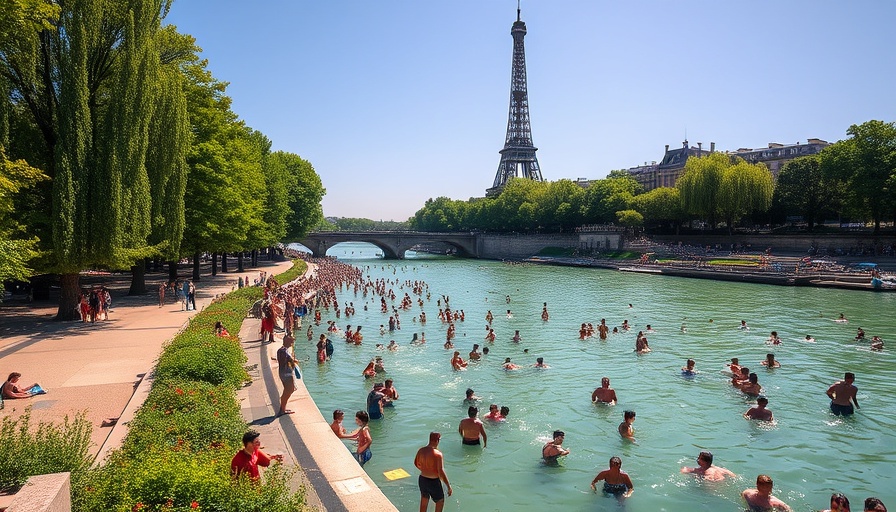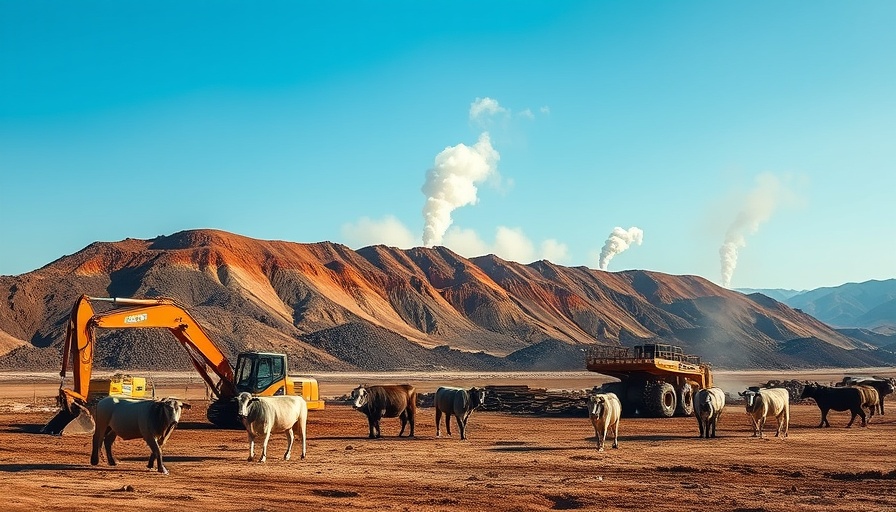
Paris Celebrates a Century of History with Public Swimming
For the first time in over a century, residents and tourists can now take a refreshing swim in the River Seine, a move celebrated as both a historical milestone and an environmental achievement. Over 100 years ago, swimming in this iconic waterway was banned due to health concerns surrounding water quality and pollution. On July 5, 2025, the city of Paris opened three designated swimming areas along the Seine following extensive cleanup efforts aimed to prepare for the upcoming 2024 Summer Olympics, allowing people to enjoy the pleasures of swimming in the heart of the city.
The Journey to Clean Waterways: A Long Fight
The lift of the swimming ban is not just a spontaneous decision but the result of decades of advocacy and environmental work. The initial calls to clean the river trace back to the 1980s, initiated by former mayor Jacques Chirac. Since then, a significant 1.4 billion euro investment has been funneled into improving sewer systems, enhancing wastewater treatment facilities, and increasing stormwater storage capacity to reduce pollution risks. These improvements have fundamentally transformed the Seine from a heavily polluted river into a considerably cleaner aquatic environment, prompting the local government to lift the swimming ban.
What Swimmers Can Expect from the New Swimming Areas
The newly opened swimming sites won’t just be a place to dip in; they come with various amenities aimed to provide a safe and enjoyable experience for visitors. Each site is equipped with lifeguard supervision, changing rooms, showers, and beach furniture to relax on, catering to an expected capacity of over 1,000 swimmers per day. The local authorities have committed to conducting daily health checks on the swimming areas, a necessary precaution, which recently prompted the temporary closure of one site after rainfall raised safety concerns regarding E. coli levels.
Managing Risks: Diverse Perspectives on Swimming Safety
While many Parisians are excited about the prospect of swimming in the Seine during the scorching summer heat, others remain apprehensive. Local resident François Fournier expressed his doubts, noting past experiences of unsightly debris floating in the river. Despite reassurances from authorities and the proactive measures taken to ensure water cleanliness, some individuals are opting to wait before diving into the waters. This division reflects a broader conversation around public health, environmental stewardship, and trust in governmental oversight.
The Impact of Climate Change and Urban Development
This reopening comes at a time when Europe is witnessing unprecedented heat waves, further amplifying the allure of swimming in the city’s natural water bodies. However, the implications of climate change pose a substantial risk to these efforts. Sudden storms can lead to overflow in sewage systems, potentially compromising water quality overnight, making it essential for city planners to integrate sustainable solutions into urban development.
Community and Cultural Benefits of Urban Swimming
The reopening of the Seine not only encourages physical activity and recreation but also fosters a sense of community and connection among residents. Swimming in publicly accessible areas transforms how urban spaces are utilized, providing a refreshing break from city life and an opportunity to socialize. For many, this initiative is a welcome change that brings joy, culture, and a sense of belonging to the heart of Paris.
Conclusion: A Hopeful Step Forward
The reopening of swimming areas in the River Seine is a significant milestone, illustrating the potential for overcoming environmental challenges through community engagement and innovation. As Parisians and visitors alike dive into the Seine, they are not just participating in swimming; they are becoming part of a historic journey toward urban renewal and sustainability. The city’s efforts underscore the importance of maintaining our waterways for future generations, fostering an enduring love for the outdoors and a lifestyle enriched by nature.
 Add Row
Add Row  Add
Add 




Write A Comment